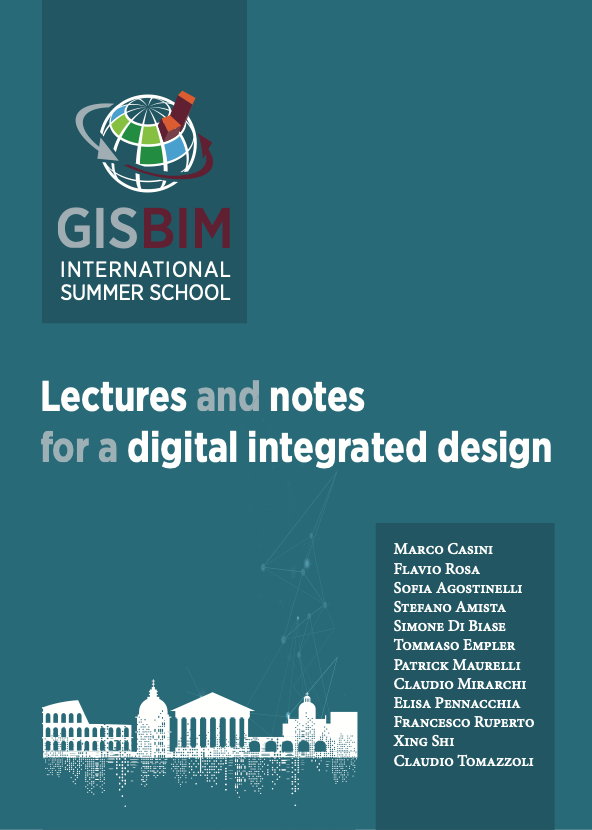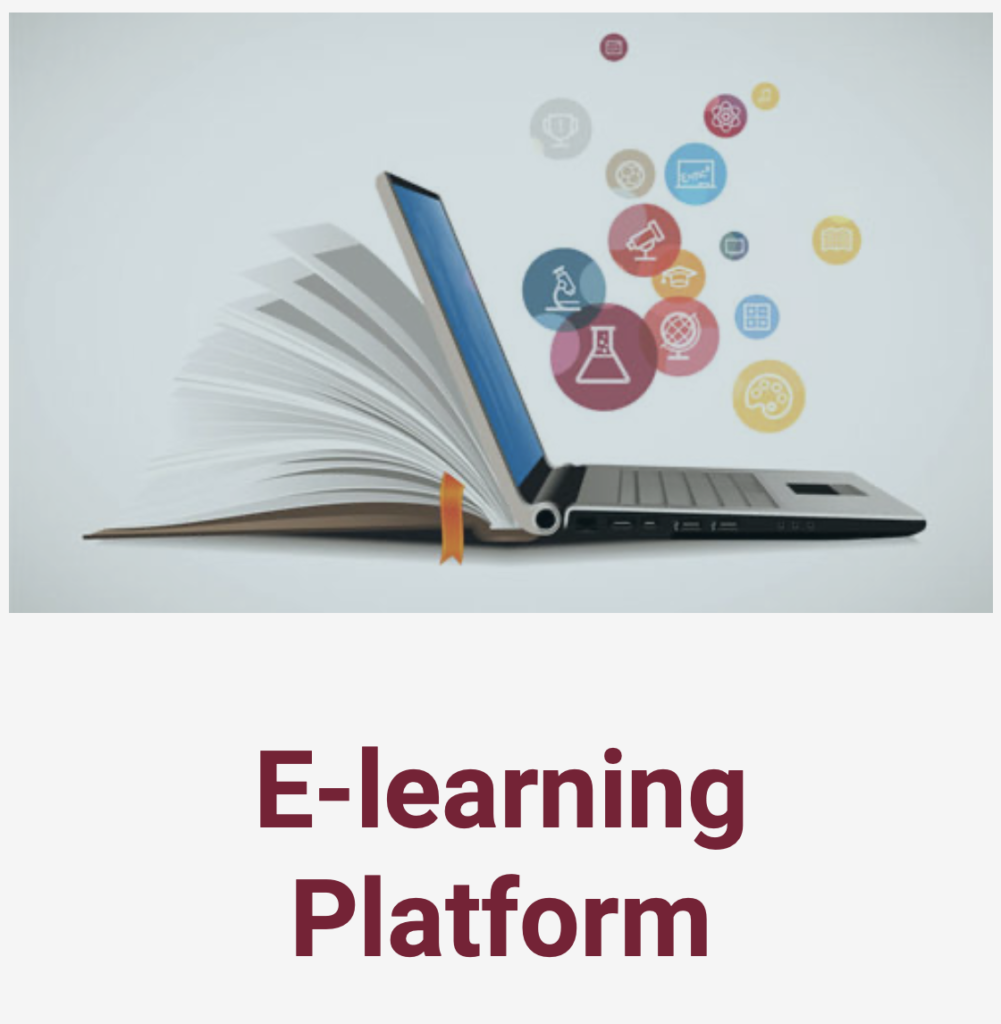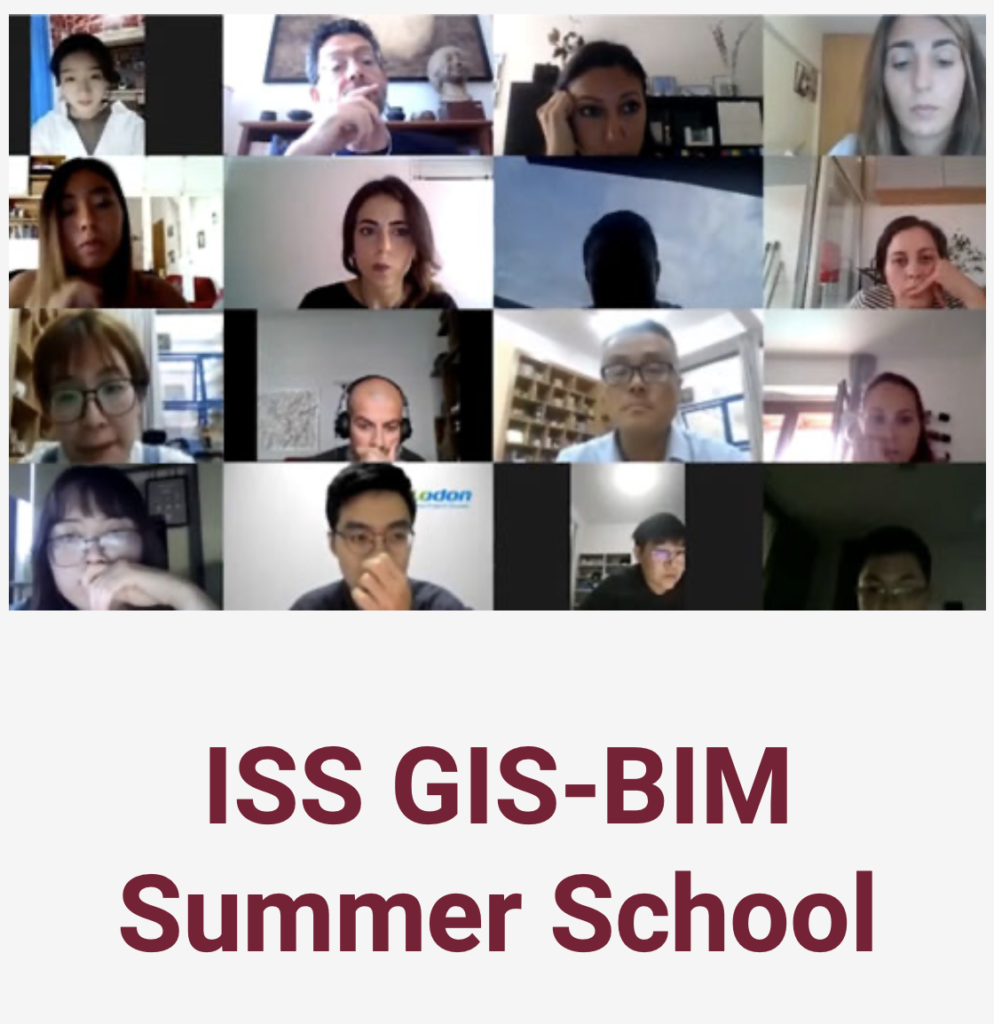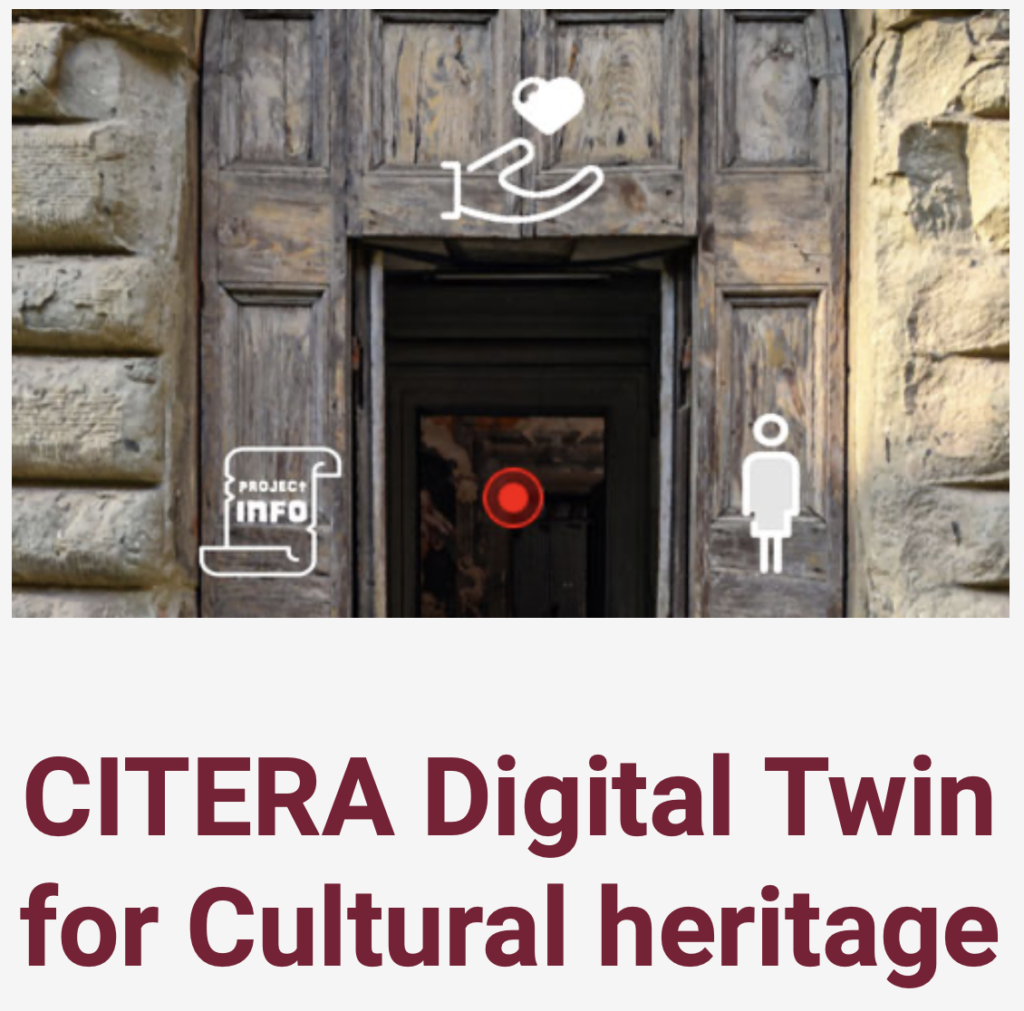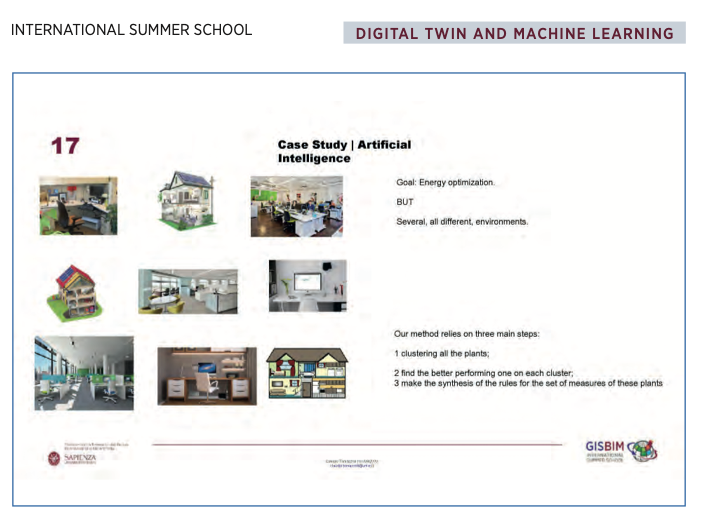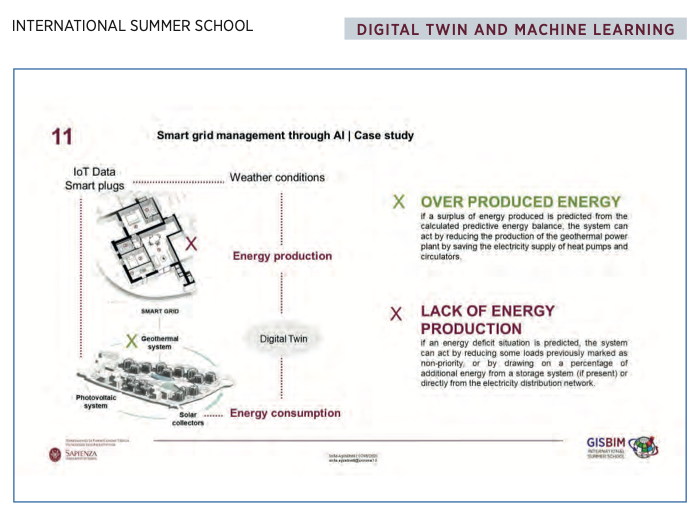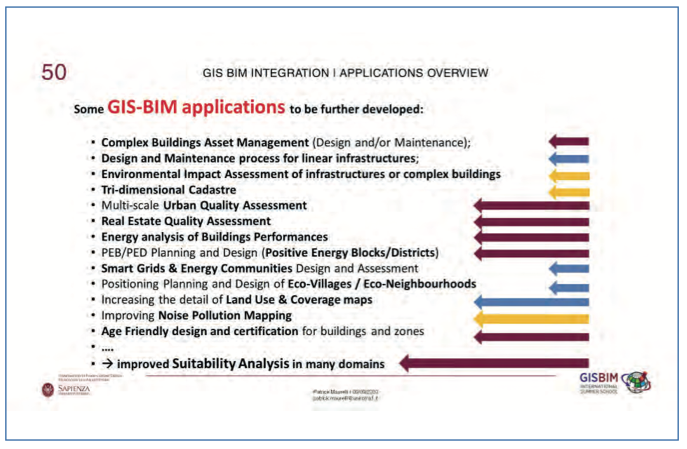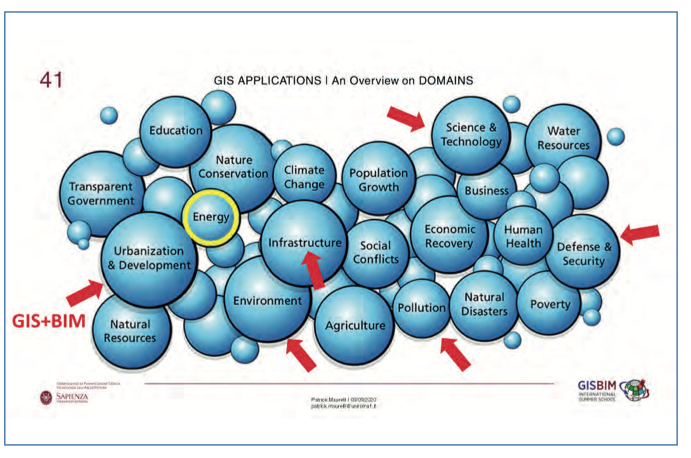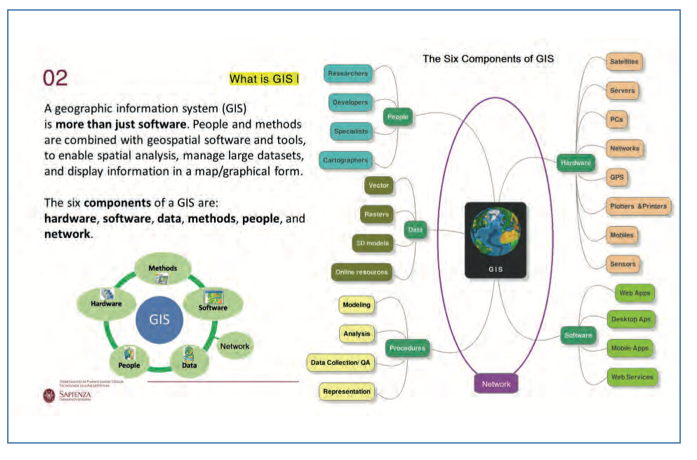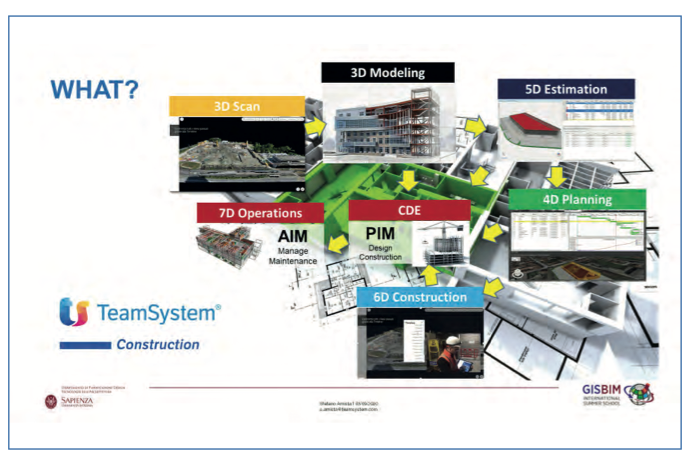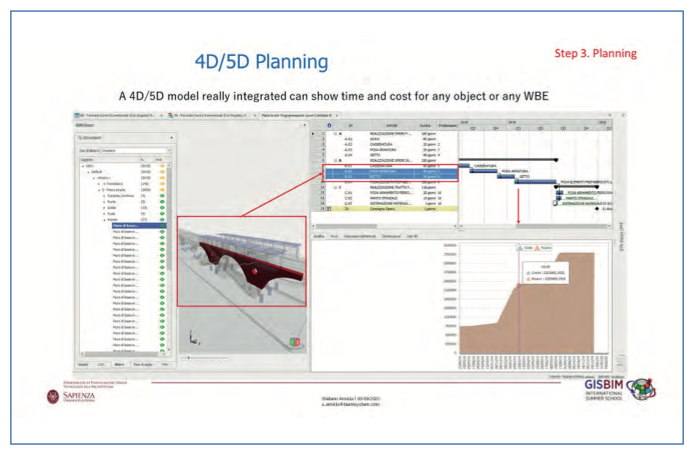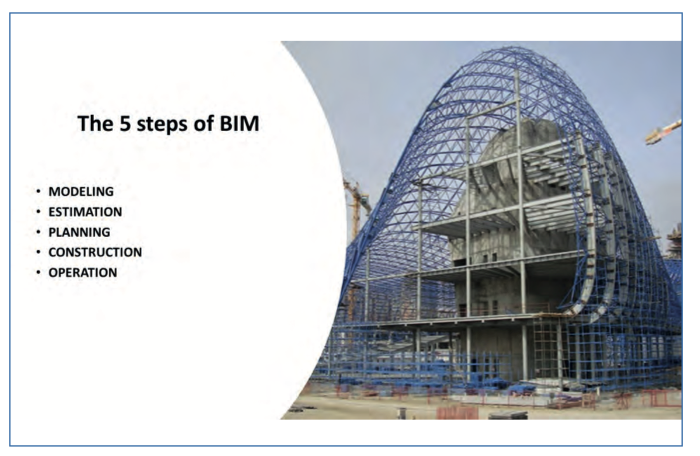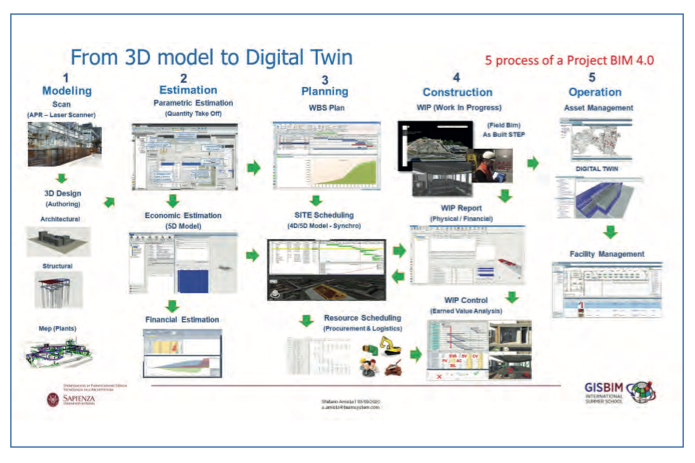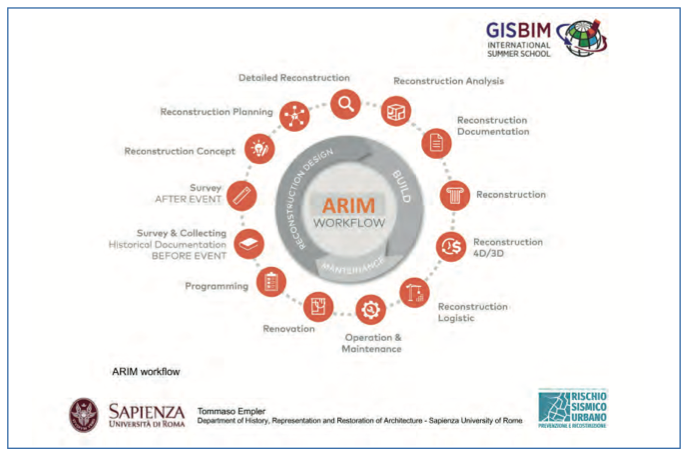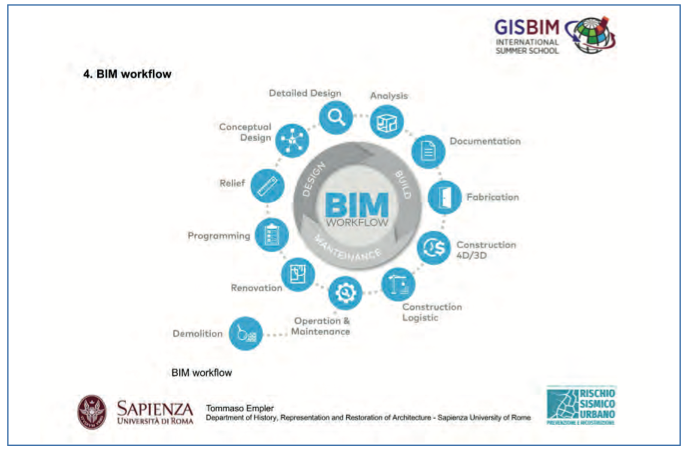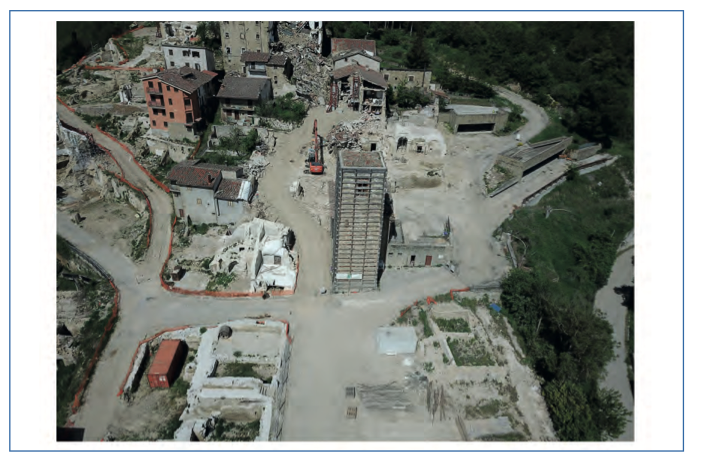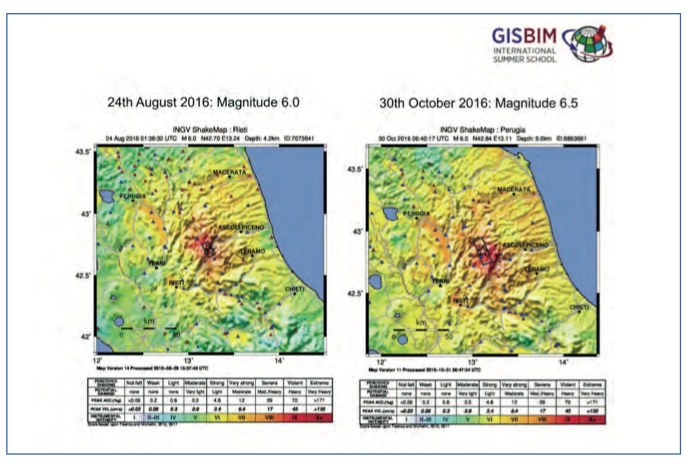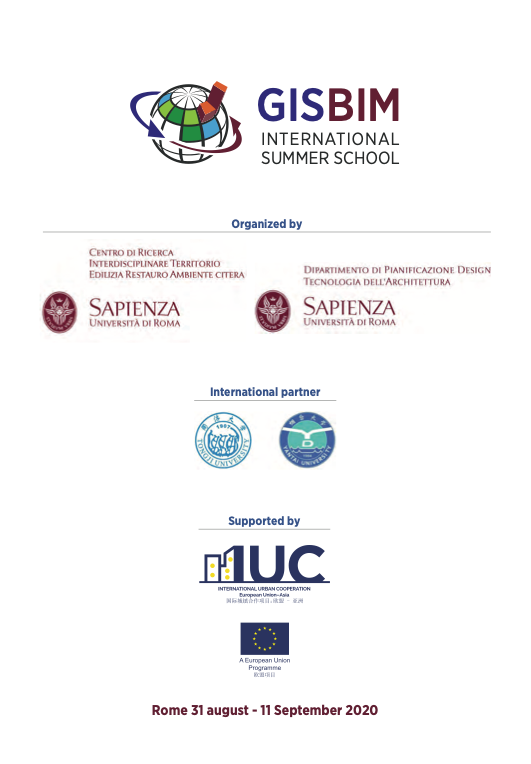With the support of the IUC Asia programme, Rome’s Sapienza University CITERA just delivered four results of the cooperation with China on integrated urban design, focusing on energy efficiency and cultural heritage. All results are available on a special website drafted by CITERA’s to summarise activities on Building Information Modelling (BIM) and Geographic Information System (GIS) with China: www.gis-bim.eu.
GIS-BIM International Summer School 2020 – Proceedings.
The book is a collection of contributions presented by professors who participated in the first edition of the International Summer School (ISS) GIS-BIM, held online in the late summer of 2020. As the book’s title suggests, digital integrated design is the topic of focus with digitalization perspectives for building information modelling (BIM) integrated with geographic information systems (GIS).
Prof. Marco Casini, Scientific Director of the International Summer School (ISS), states “Massive changes are occurring as a result of the possibilities created by the synergic use over the entire life cycle of Building Information Modelling (BIM) and Geographic Information System (GIS) in design at building and urban scale making building planning more efficient, rational and standardized. (…) The ISS GIS-BIM for Digital Integrated Design had the important objective of giving a comprehensive review on BIM-GIS integration in sustainable built environments in order to analyze the status quo and practical applications from the viewpoints of technologies for data integration, applications in the life cycle of AEC projects, building energy management, and urban governance, showing relevant case histories”.
Profs. Sofia Agostinelli and Elisa Pennacchia introduce the subject on BIM-GIS integration towards Digital Twins: shaping smart for rethinking cities. They point out that, “Cities are the main sources of environmental pollutants on a global level and the places where vulnerability to climate risks and related upheavals can be tackled, as well as the major socio-economic and human health challenges. Therefore, they are the most appropriate places to start the transition towards sustainability, linking the sustainable development agenda with the ICT of pervasive digital research and development.” Regarding the Smart City approach, “The integration between Building Information Models (BIM) and Geographic Information Systems (GIS) becomes a crucial strategy aimed at increasing efficiency in information processes between building systems and subsystems analysis, urban planning applications, disaster management, cadastre and homeland security and so on. While BIM focuses on buildings and on the representation of construction details, i.e. micro-level data, often unrelated to context, GIS specializes in geospatial information defining the environmental level, and it is used to generate information at the macro-level, such as topographical data.“
Prof. Flavio Rosa, ISS Coordinator, notes that “The building sector, with 40%, is the largest end-energy user. Information and communication technologies (ICT) have been identified to play an important role in reducing energy intensity and increasing the energy efficiency of the building stock. The building process is in rapid and considerable transformation given the entry of BIM (Building Information Modeling) which is greatly modifying its workflow. These transformations are in place both at the level of energy planning on the urban scale and at the level of the single housing unit. The concept of Smart Cities has dramatically changed reading and urban planning. (…) The urban scale, with GIS (Geographic Information System) and BIM tools for the single housing unit, infrastructures a highly interconnected workflow, flow of data and information. The amount of information to be processed must be managed with ICT methodologies and solutions”. Professor Rosa expresses his gratitude to Sapienza colleagues including Professor Laura Ricci, Director of the DPDTA, who “conceived to train students all over the world on a subject as yet unexplored” – so Prof. Rosa.
IUC Asia Team Leader Pablo Gándara states that “Within the IUC Asia project, we have involved many cities from China and the European Union, with Rome as a great example of commitment and excellence. We have promoted together a multi-stakeholder approach involving public authorities, the research community and the business sector. I am happy to see that – since the very beginning of Rome’s IUC participation – Sapienza University has taken a leading role in this ‘triple-helix’ approach. The summer school on BIM and GIS is a remarkable pilot project that has delivered deep insights into urban planning, which is the base for achieving sustainable urban development. I am delighted to have seen such a wide range of applications for digital tools like BIM and GIS in the planning and construction processes, which may enable cities’ experts to achieve higher levels of energy efficiency and protect architectural heritage in China and Europe“.
Download the book here www.gis-bim.eu
Video on Sapienza’s IUC engagement, the Yangzhou Expo 2021 and the GIS-BIM Summer School
A promotional video on the GIS-BIM International Summer School has been produced by Sapienza University in cooperation with the IUC Asia program and highlights the concept of Cooperation by Training. Sapienza along with Tongji and Yantai Universities in China are institutional partners within the IUC Asia program, and the 8-minute video highlights the cooperation enjoyed by students from both regions. The International Summer School focusing on the digitilization of planning, design and construction processes recently concluded its first edition. Many Chinese students attended the course. “Thanks to the intense support by the European Union programme IUC have carried out intensive activities of cooperation with Chinese academic, administrative and economic institutions. Culture, education, clean energy, circular economy, smart city and digital transition have been the themes of this cooperation activity, strengthened through eight missions in China and Europe, and several webinars and city-to-city meetings“.
IUC provided the Sapienza faculty of architecture with the support to participate in the Horticulture Expo in Yangzhou from April to October 2021. Sapienza University under the patronage of the Municipality of Rome will present in Yangzhou concrete examples of sustainable green construction and gardening solutions, and will promote the image of Rome, its excellence in urban agriculture, agrifood culture and design. Smart energy districts, near zero energy buildings and cultural protection strategies have been discussed and are now evolving into co-working initiatives, a Roman team with several Chinese institutions.
The IUC Competitive Fund supported the promotion of the Summer School in China and granted 10 scholarships for Chinese students to a 40 hour course, using ICT tools such as BIM and GIS.
The video can be seen here: https://www.iuc-asia.eu/wp-content/uploads/2020/12/Citera-with-IUC-clips_low2.mp4
Digital Twin on Cultural Heritage Protection
The Digital Twin Lab of CITERA Sapienza University is engaged in research activities in the field of digital modelling aiming to the protection and conservation of historical buildings and cultural heritage. They are developing a Virtual Model of the ancient Palace Silvestri-Rivaldi, a renaissance resource representing one of the most important recovery and restoration activities currently underway in Italy, strategically positioned next to the archeological area of the Roman Colosseum. This is the first Demo deployed by CITERA Sapienza and MiBACT DGERIC, with the support of IUC-Asia Programme, to test and show the potentialities of 360° modelling techniques and virtual environments, applied to a restoration complex worksite.
Here MiBACT – DGERIC is managing several “Restoration School Worksites,” open to students and teams from all over the world, and many workshops focusing on different applied disciplines are going to be planned within Ad Templum Pacis Project – DTC LazioInnova Regione Lazio. A “School Worksite” is a place where the immaterial enrichment of new discoveries is shared on the ground, with interdisciplinary scopes and approaches and with the participation of many user profiles: historians, restorers, digital designers and modelers, architects, cultural promoters, sponsors and visitors.
The schools are managed by Sapienza and others, and are open to students coming from all over the world. Cultural and artistic resources are linked to hypermedia objects, such as BIM models, multimedia documentation and a systemic story-telling aiming to involve both technical and touristic users. The idea is to connect progressively these hypermedia objects to a Blockchain database able to certify historical data, maintenance guidelines and instructions, and, more in general, technical knowledge.
Within the IUC programme, Rome and Chinese cities are cooperating in this domain for R&D and educational purposes. Theory and practice have never been so close. Italy and China are working closer and closer together.
The digital Twin can be seen here: https://www.gis-bim.eu/citera-digital-twin-for-cultural-heritage/
E-Learning Platform
The e-learning platform offers Educational Contents and an open channel for exchanging ideas around the issues of the integrated digital design for buildings and urban planning, where ICT tools and innovative methodologies could lead to quality and sustainability. “We hope the next editions of the summer school could be done as soon as possible in the presence, in Rome and in one of the Chinese partner city, to foster meeting between people and friendships, to visit real projects and demonstrators and to develop co-working laboratories. We continue to strengthen the international cooperation between Rome and Sapienza university with China and all the world” – so Professor Patrick Maurelli from CITERA. The next editions of Winter and Summer International School will be soon presented and promoted. New international partners will participate and the teachers’ team will be enlarged – so Mr Maurelli.
The e-learning platform can be seen here: https://www.gis-bim.eu/e-learning-platform/



